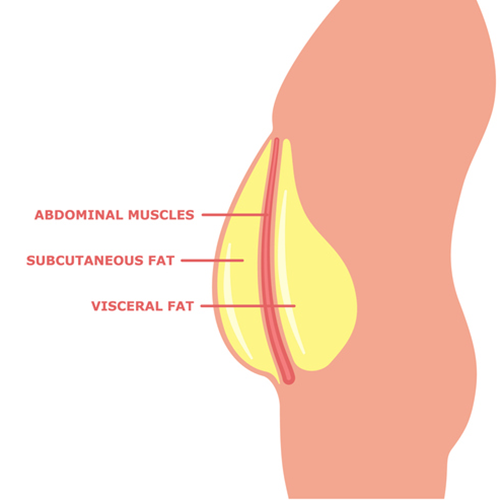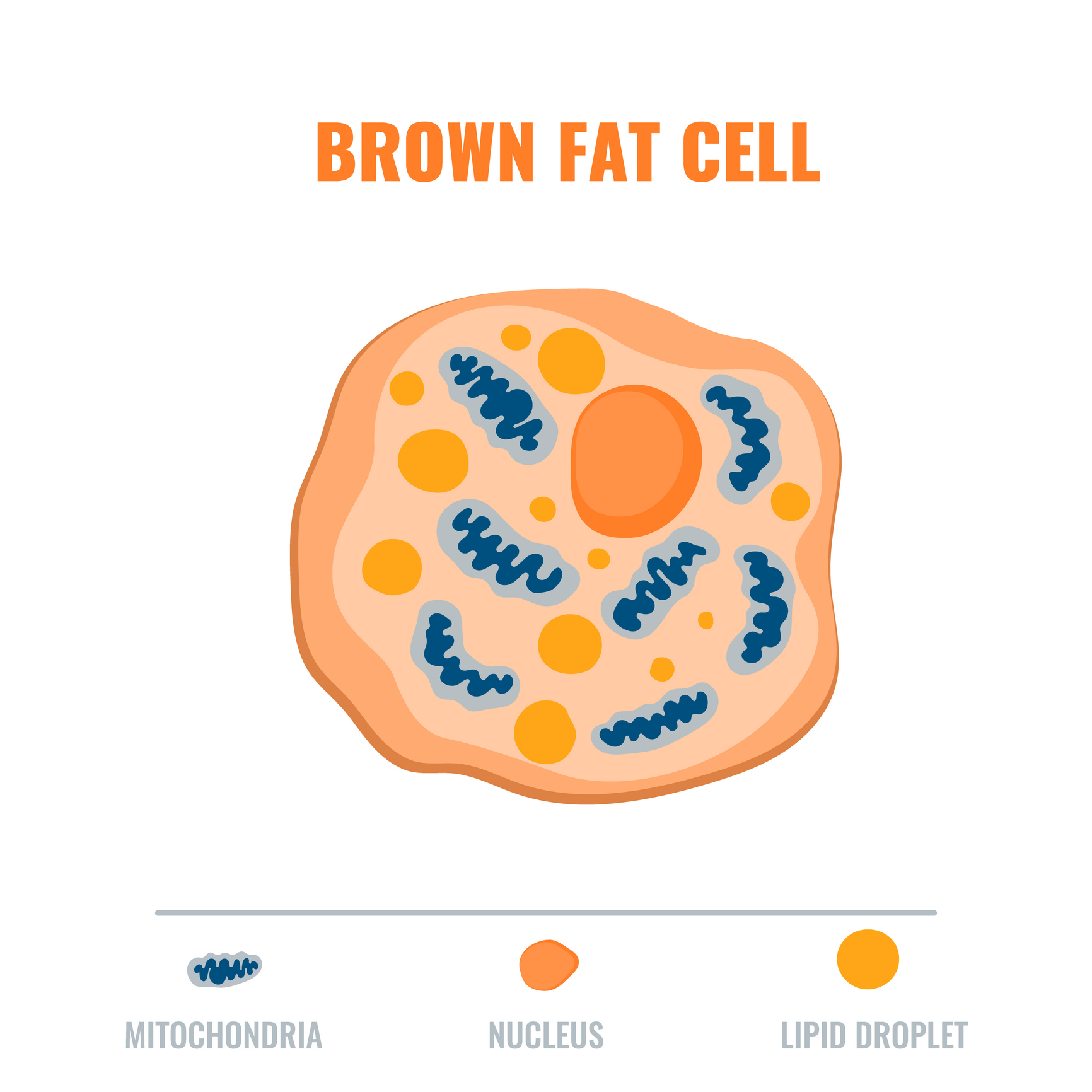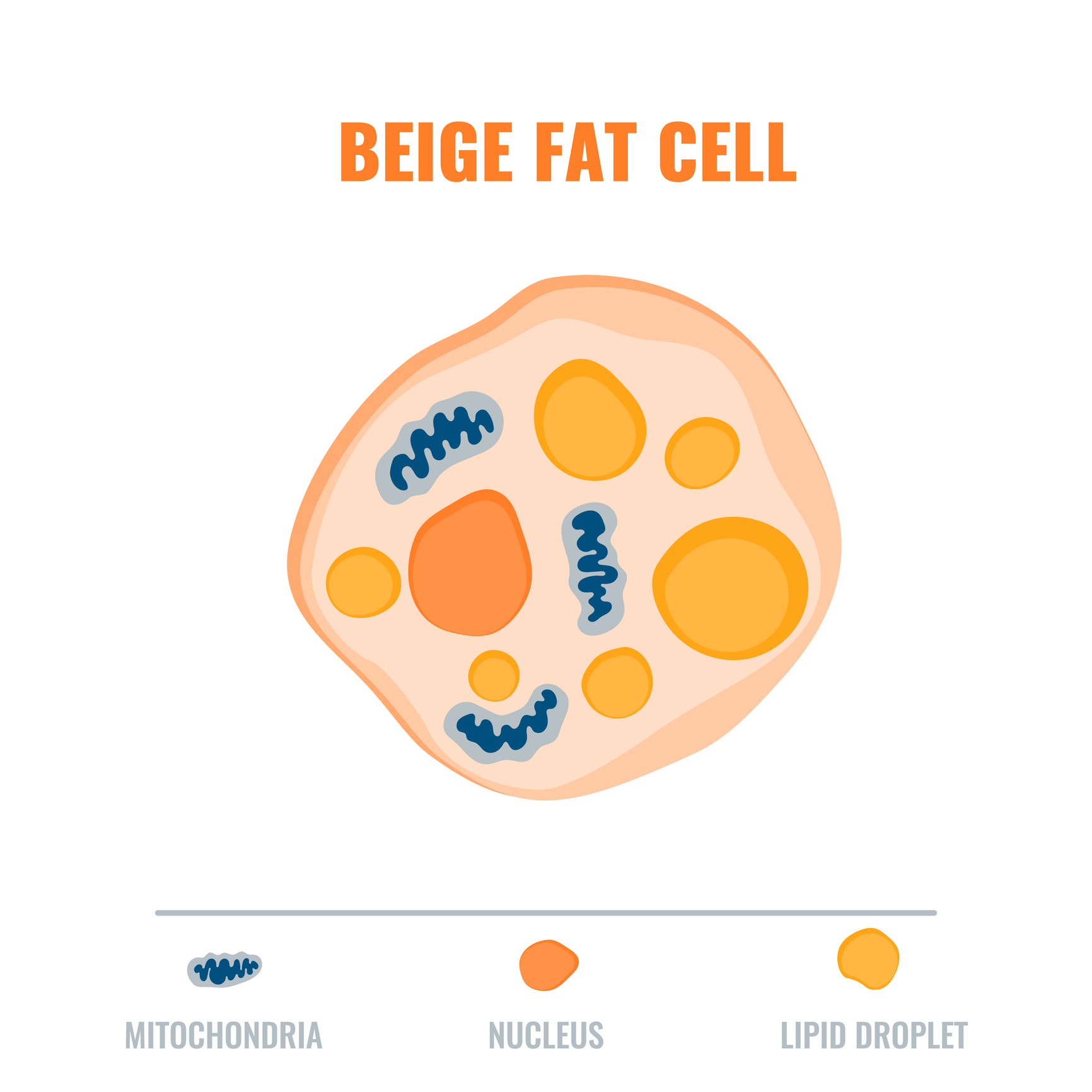When it comes to body fat, most people think of it as a storage system for excess calories. However, there are different types of body fat that serve various purposes.
If you're focused on losing body fat or maintaining a low body fat percentage, you may be affecting some of your body's normal functions, such as blood circulation and cell repair and growth.
"Fat is essential for a living, functioning person," explains Dr. Gillian Goddard, M.D., a general endocrinologist and adjunct assistant professor of medicine at NYU Langone Hospital. "It is not just a storage for excess energy or calories."
Let's explore the role of body fat and the differences between its various types.
1. White Fat

White fat cells are large blobs with a big lipid droplet in the middle and a rim of cellular machinery. White fat primarily stores excess energy.
There are two forms of white fat that you're probably familiar with: subcutaneous and visceral.
Subcutaneous Fat

Subcutaneous fat is primarily made of white fat cells and is located just under the skin. It's found in areas like the arms, legs, and belly, providing insulation and storing excess calories.
Maintaining a healthy body weight ensures that subcutaneous fat is not metabolically harmful. It's possible to have curves and be fit at the same time.
However, subcutaneous fat is responsible for cellulite, which occurs when fat pushes through the connective tissue beneath the skin.
Visceral Fat
Visceral fat, also known as deep fat, is made entirely of white fat cells and forms around the organs in the abdomen. Excessive visceral fat can increase the risk of diabetes and other serious health conditions.
"Visceral fat is a major contributor to health issues associated with excess body fat," says Dr. Goddard.
Excess visceral fat is often indicated by a "beer belly" or a large waist circumference. Women with a waist circumference over 35 inches and men over 40 inches likely have excessive visceral fat.
2. Brown Fat

Brown fat cells have a small lipid droplet and dense cellular components, appearing brown in color. These cells contain mitochondria that burn fatty acids and glucose to produce heat.
Contrary to common beliefs about fat cells, brown fat is metabolically active and is being studied for its potential in treating obesity.
While it was previously thought that only infants had brown fat, adults also have it. Brown fat helps regulate body temperature, particularly in areas like the neck, clavicle, and spine.
Exposing yourself to cold temperatures can help increase brown fat, but it's not as simple as just being in a cold environment. Prolonged exposure to temperatures below 60 degrees may trigger its production.
3. Beige Fat

Beige fat is a newer discovery and falls in a gray area between white and brown fat. Research suggests that white fat cells can transform into beige fat, which also burns calories and produces heat.
Found near the collarbone and spine, beige fat shares similarities with brown fat but much remains unknown about it.
